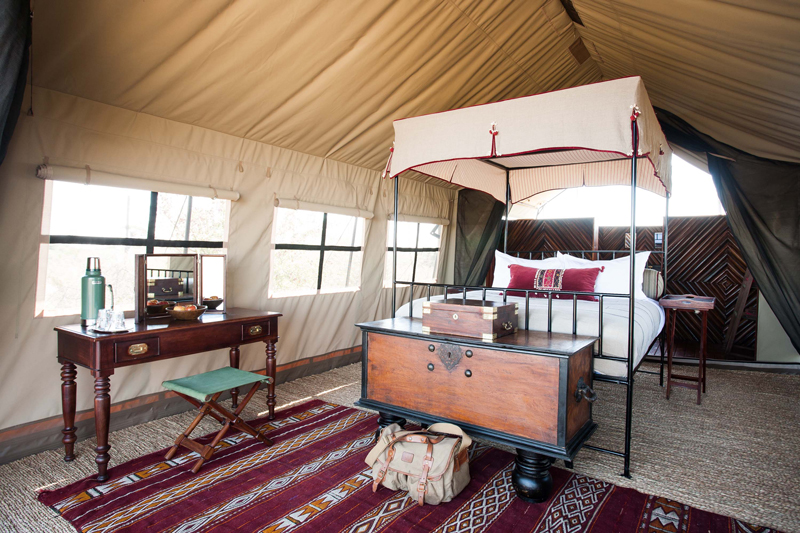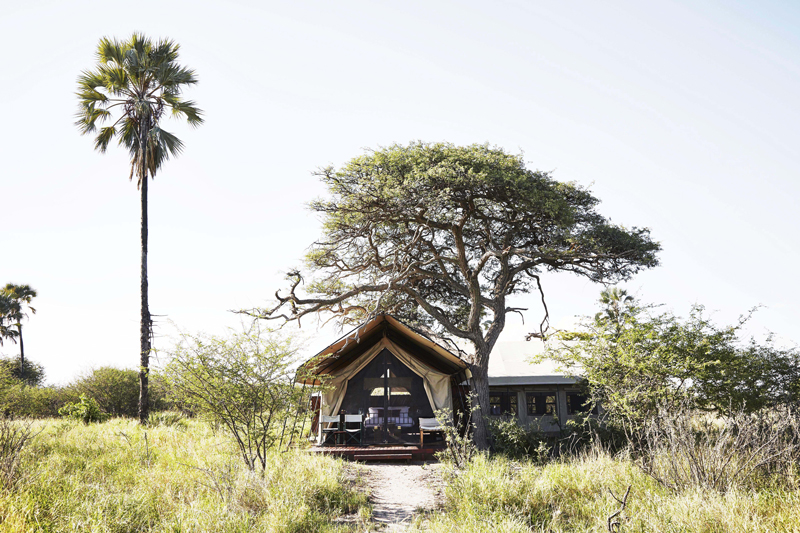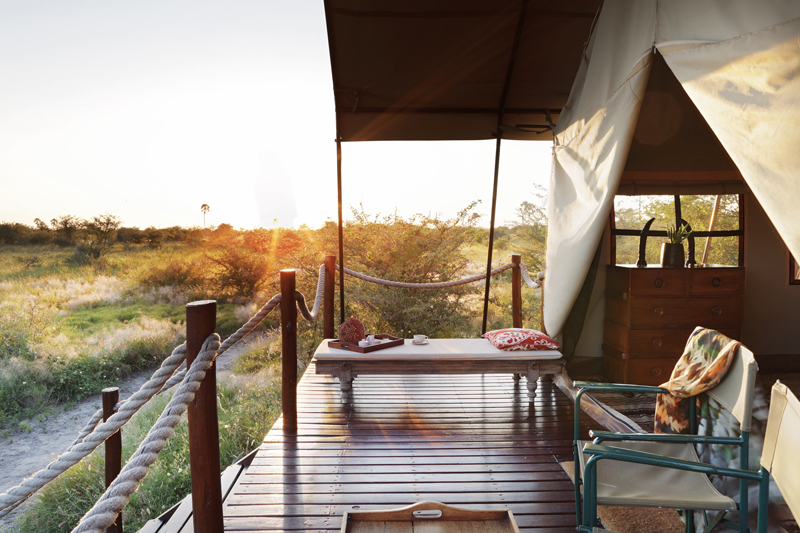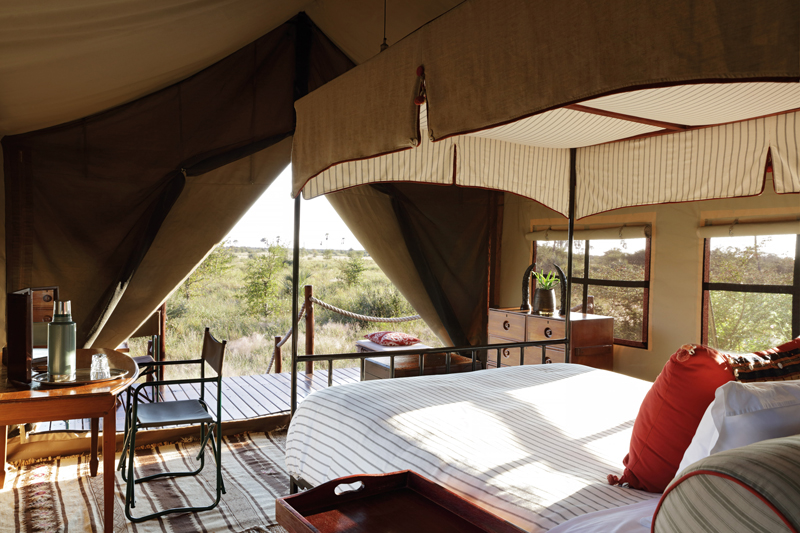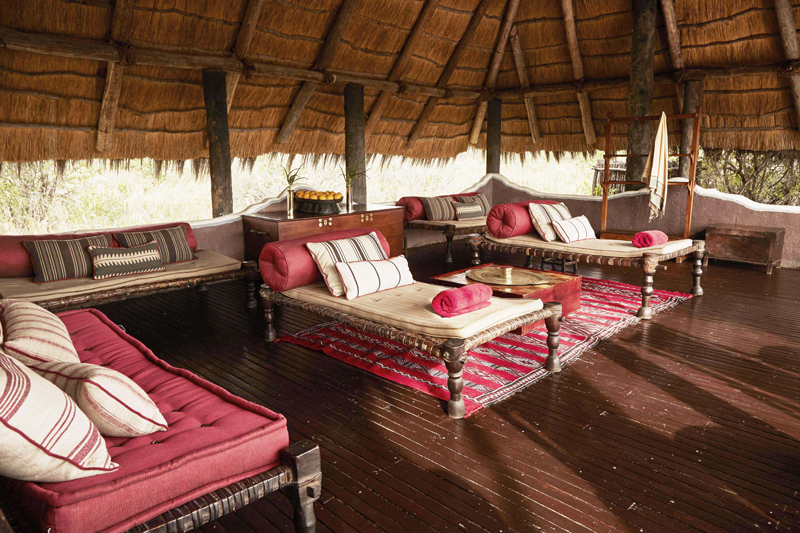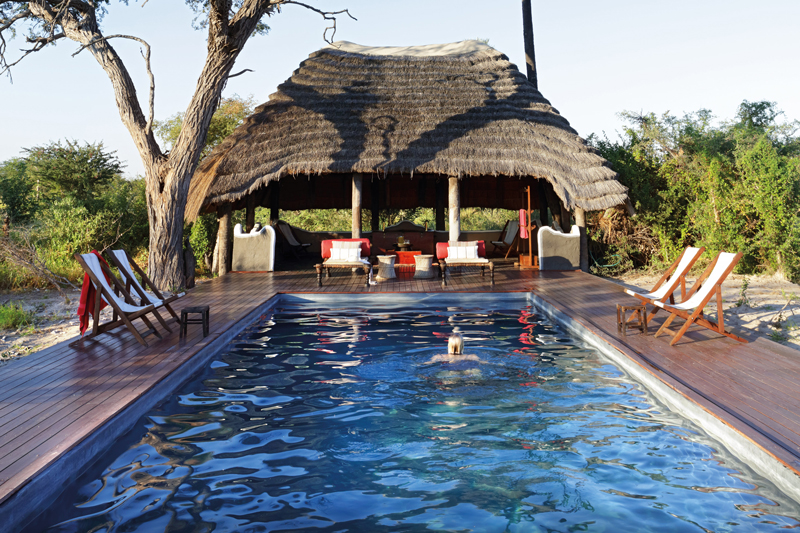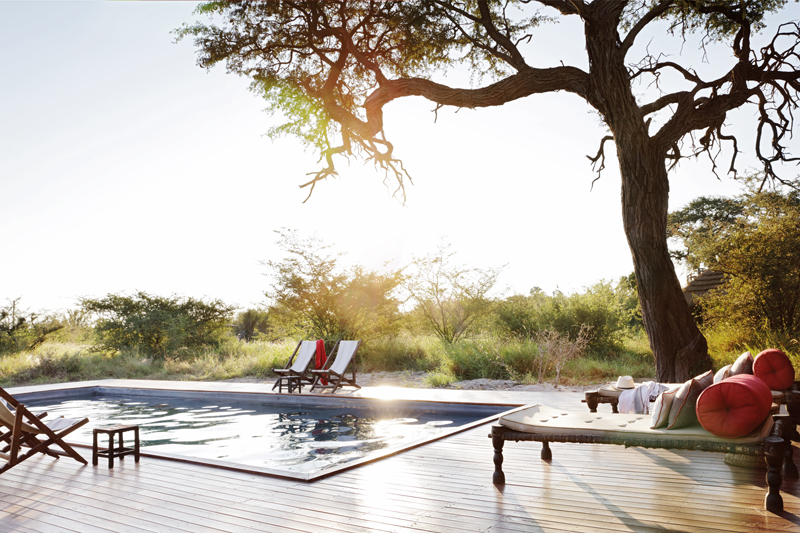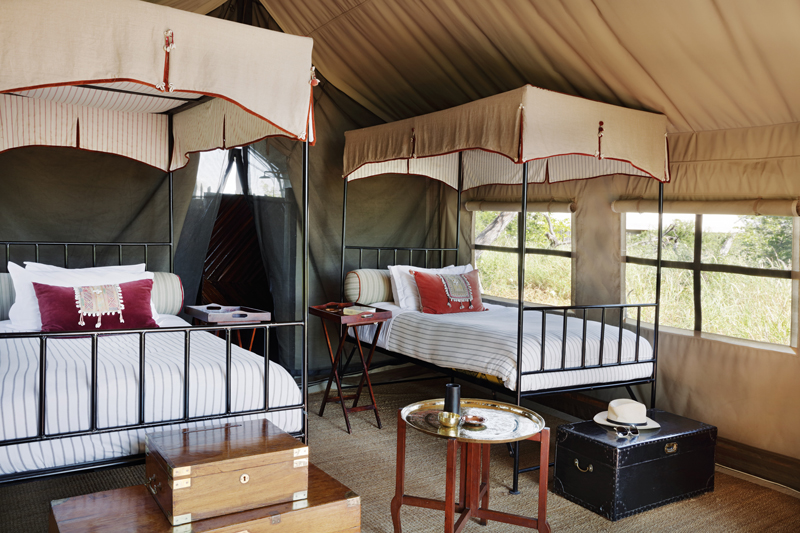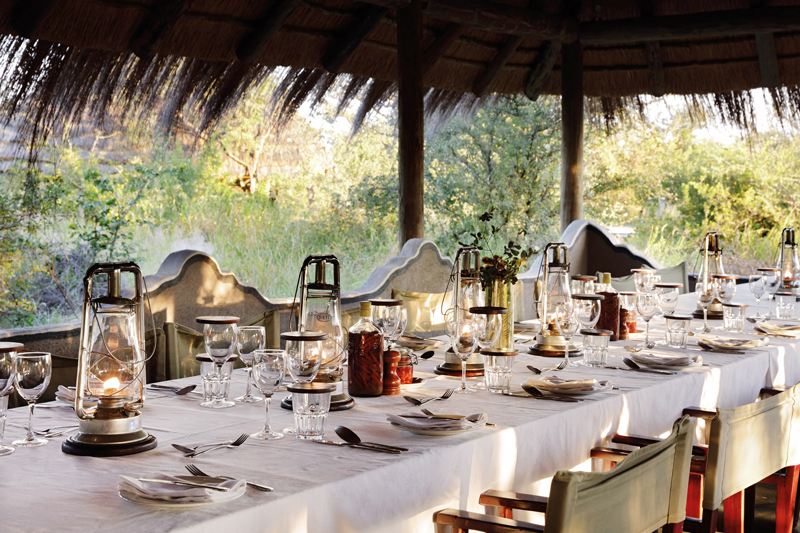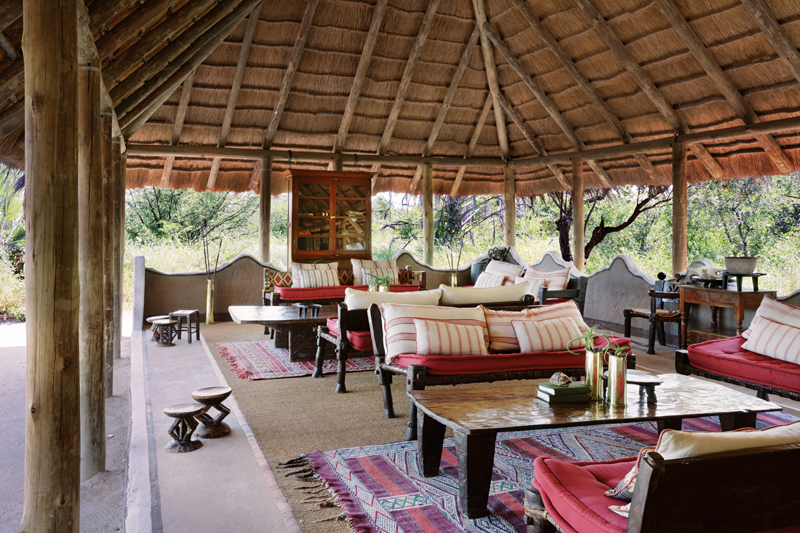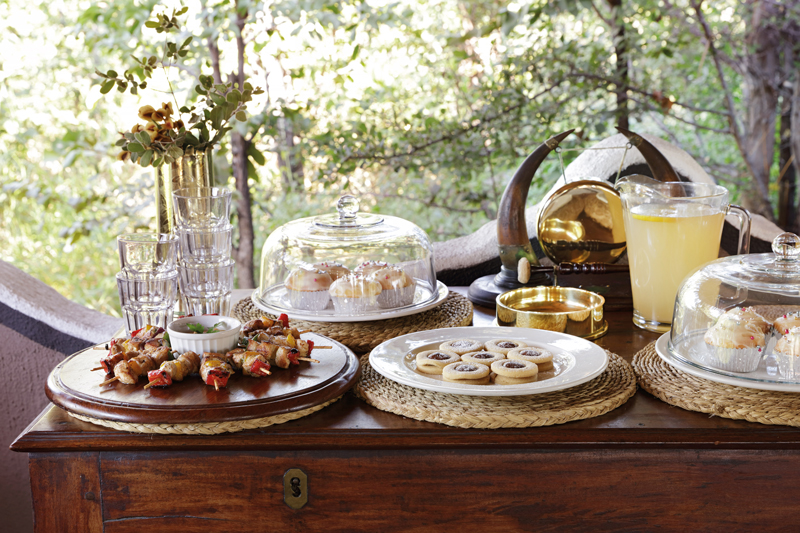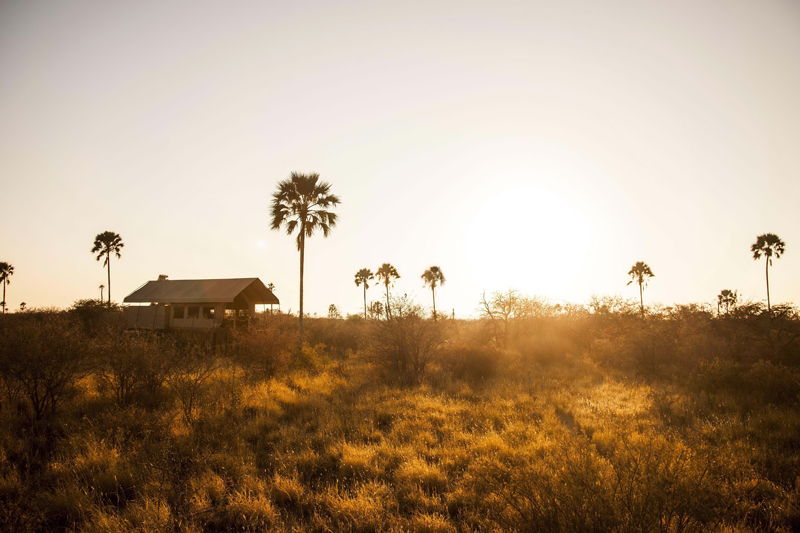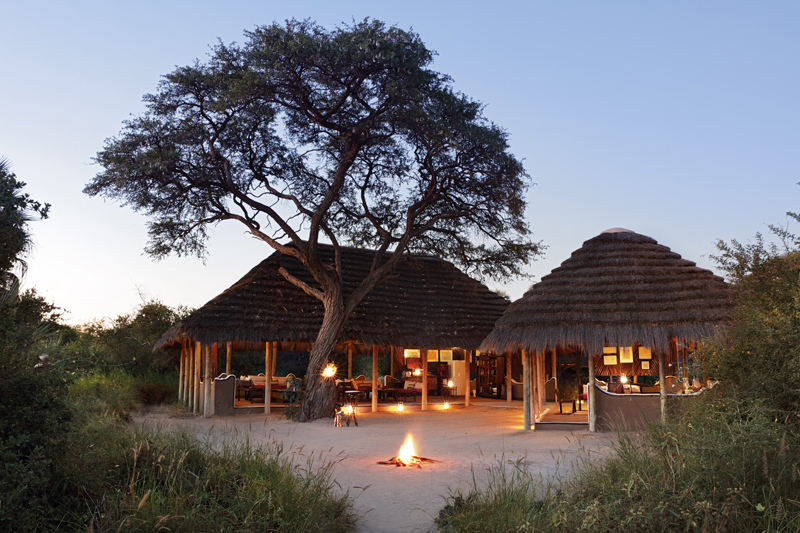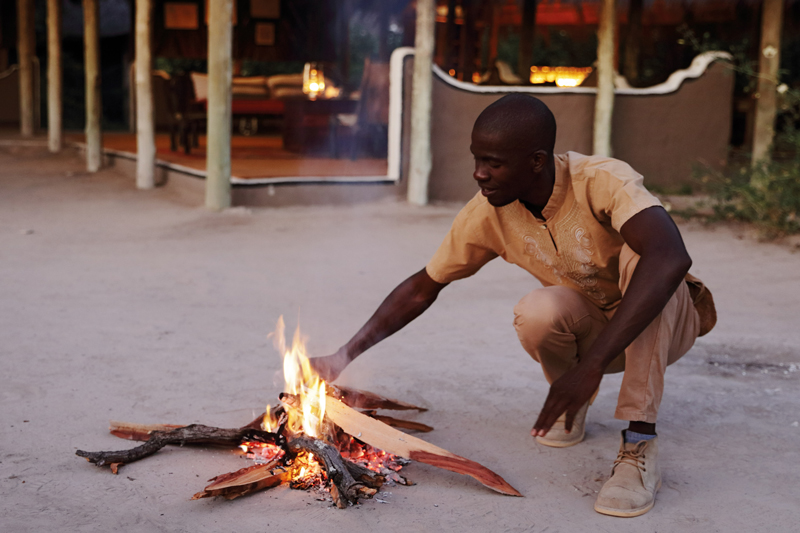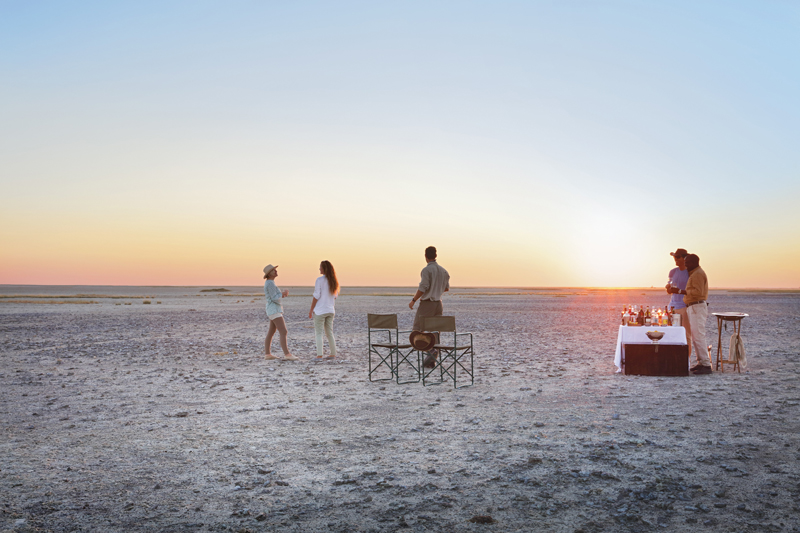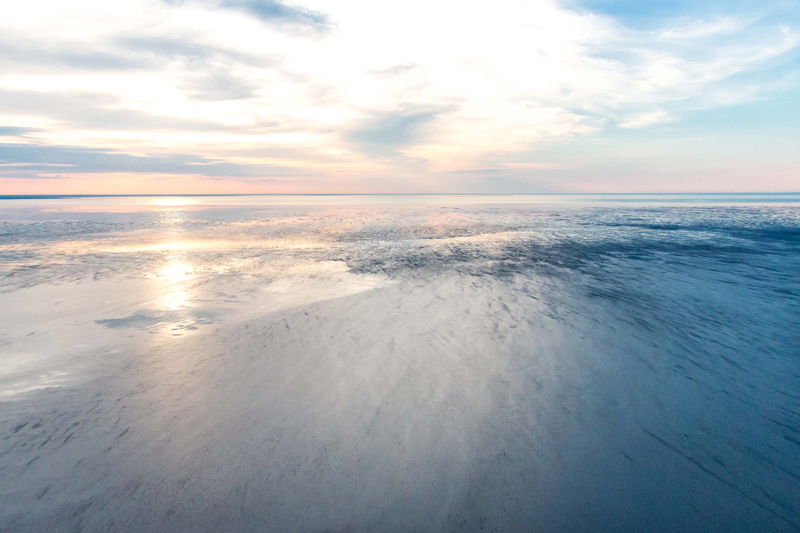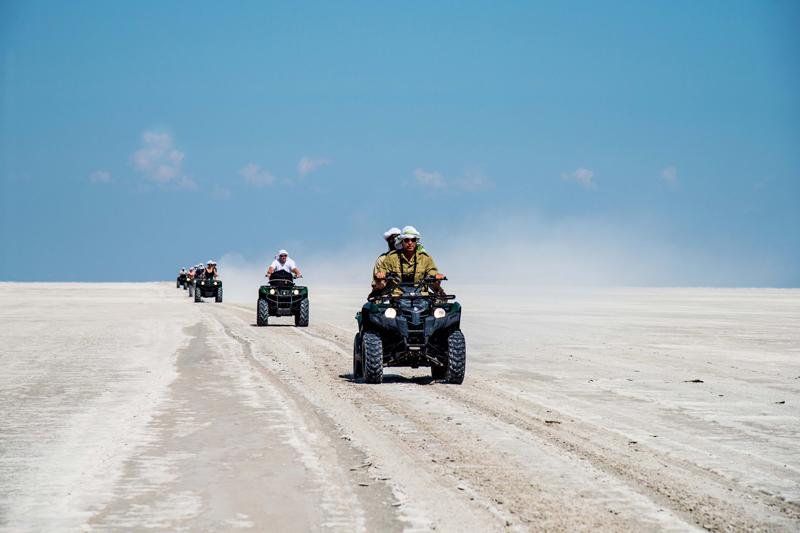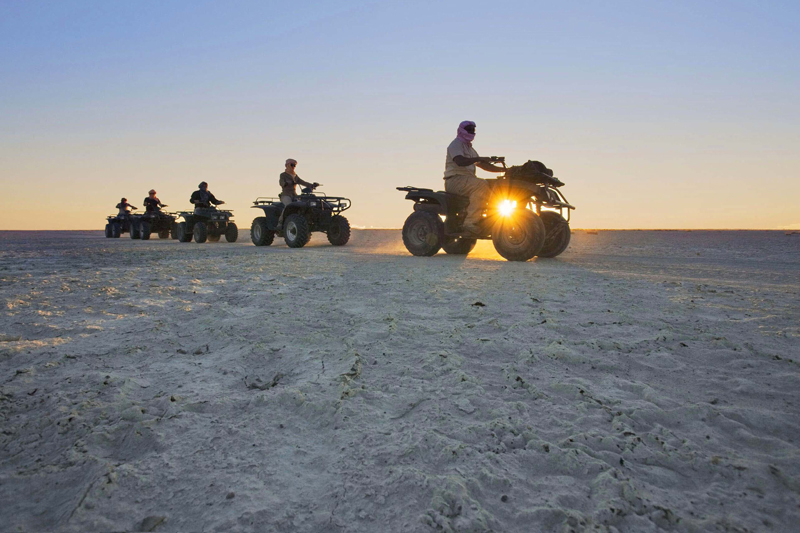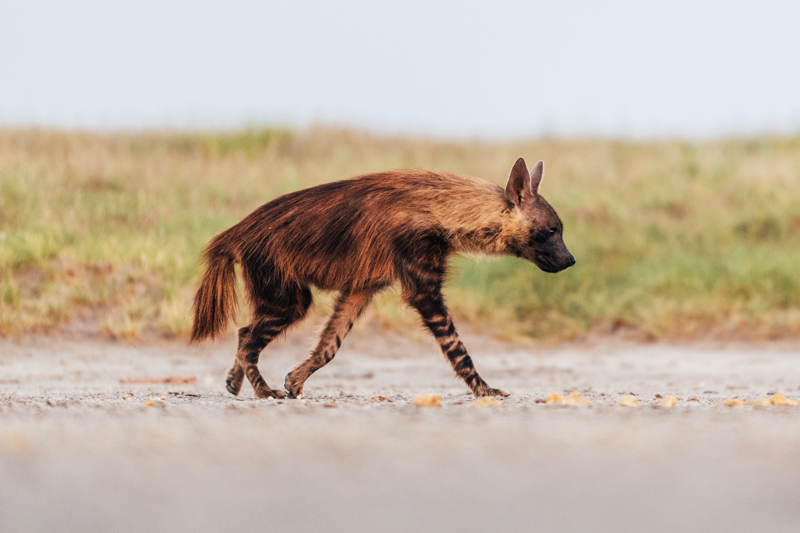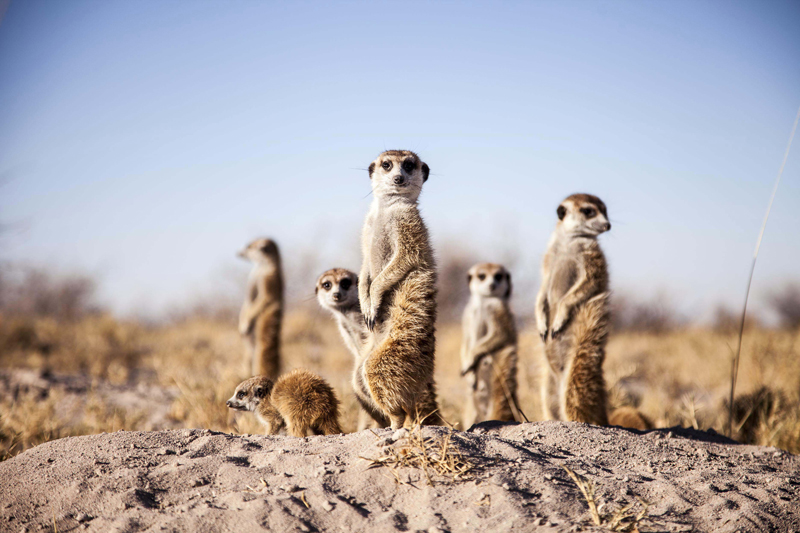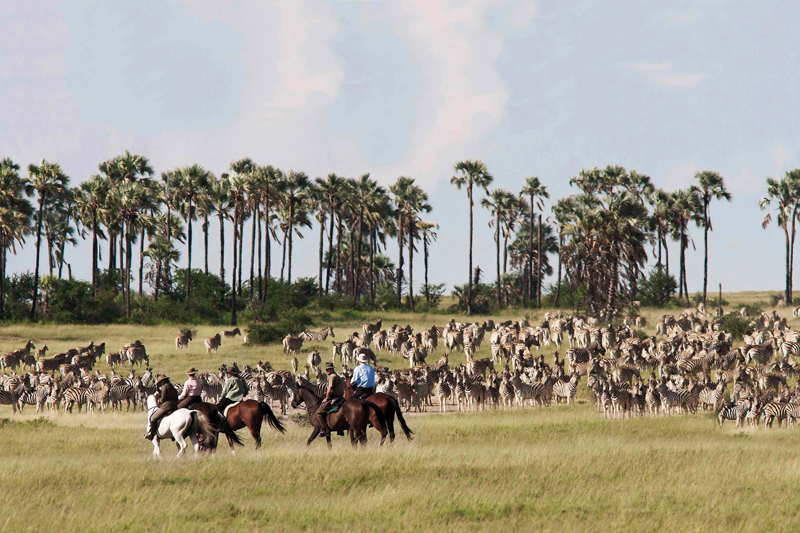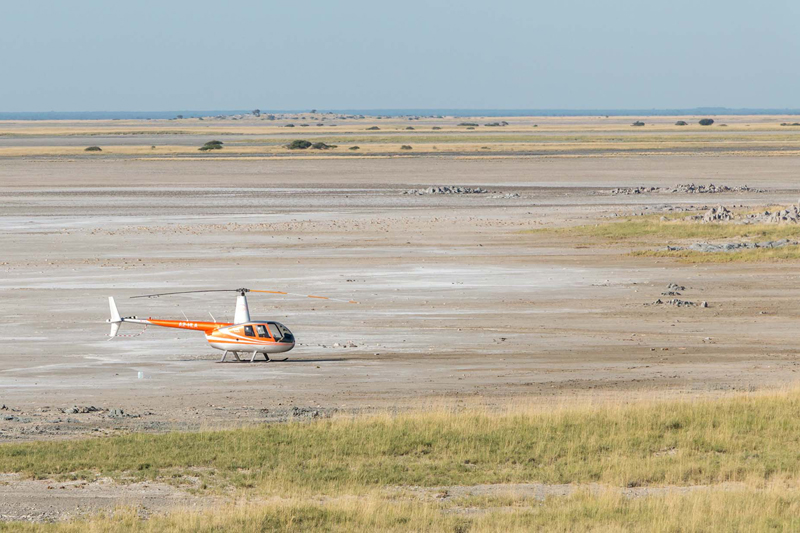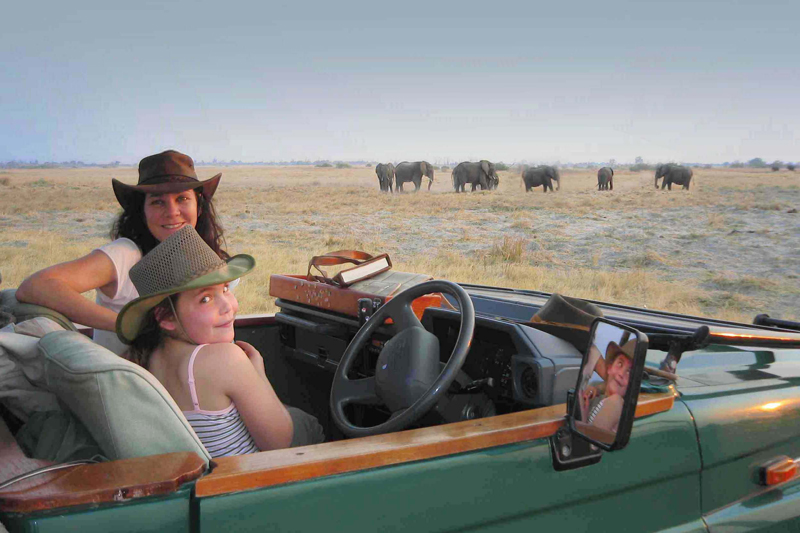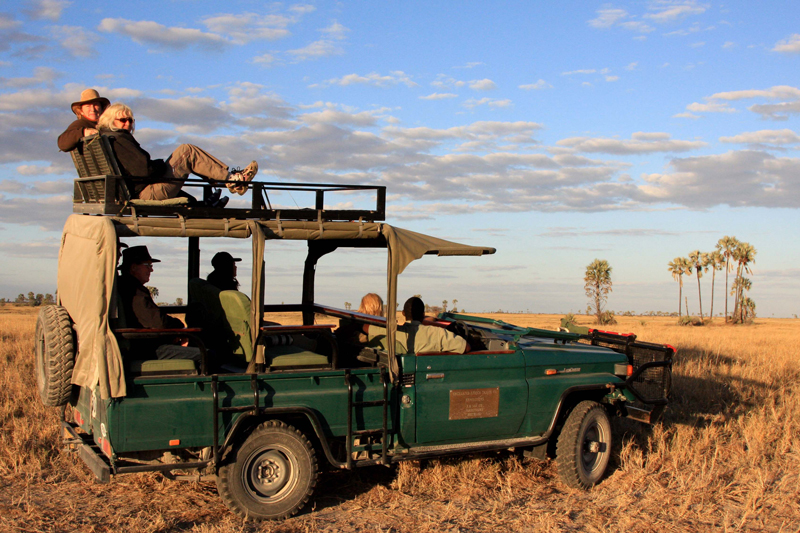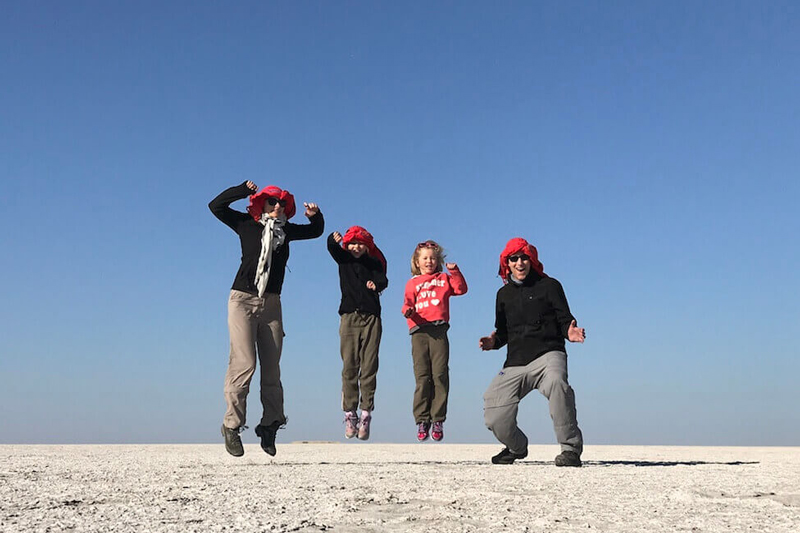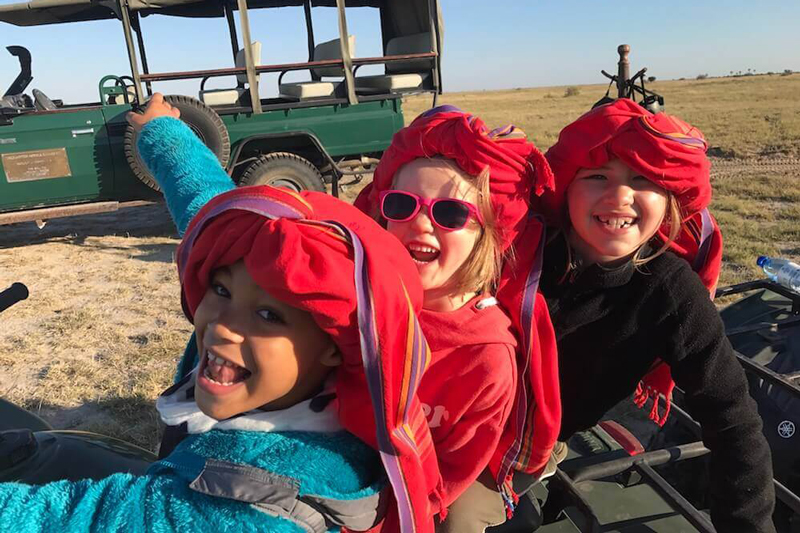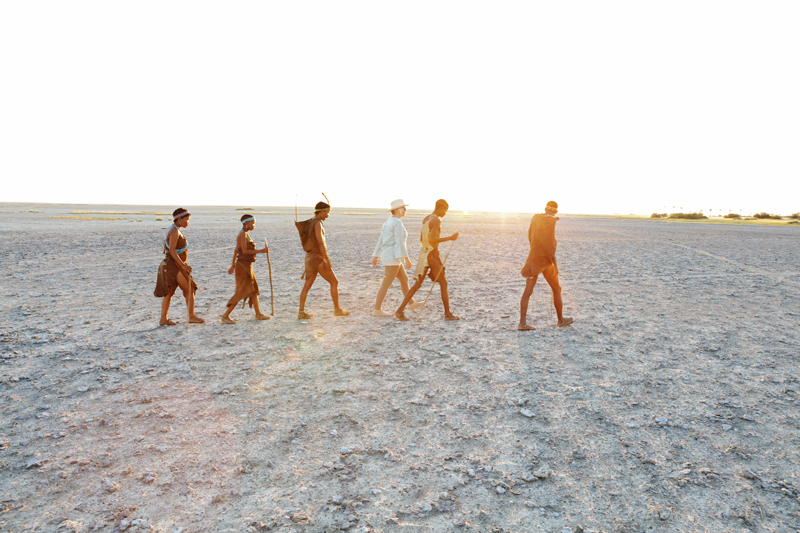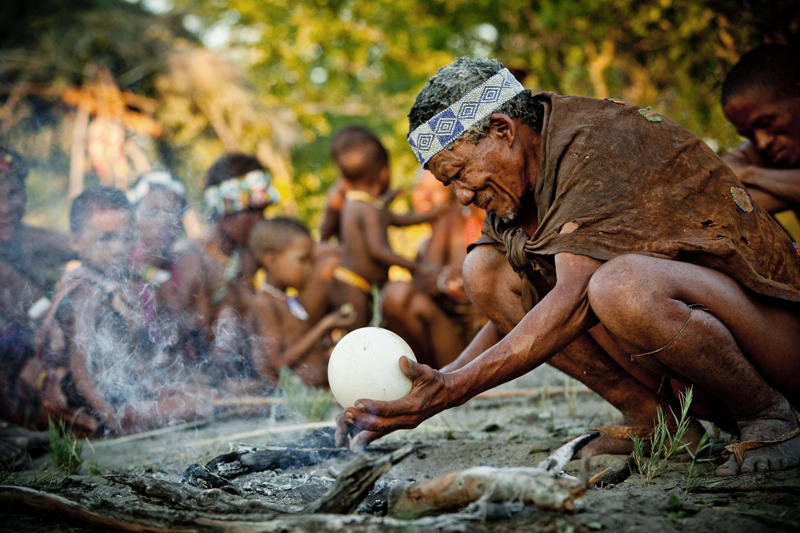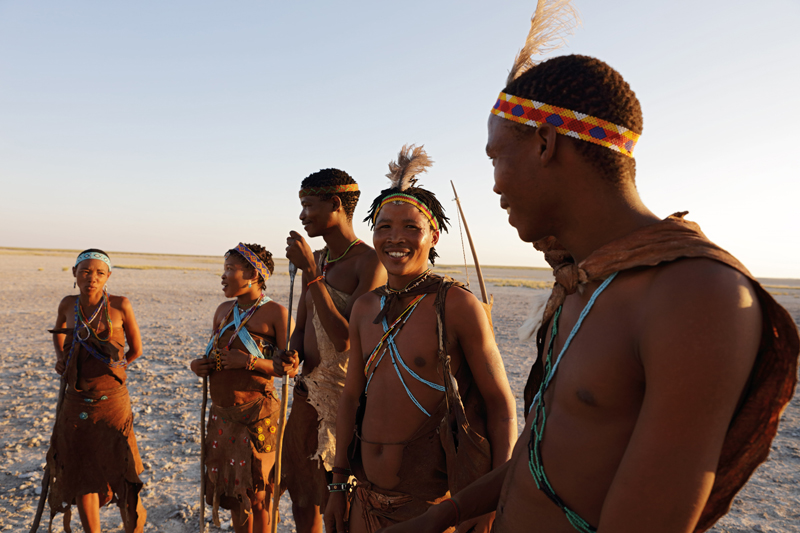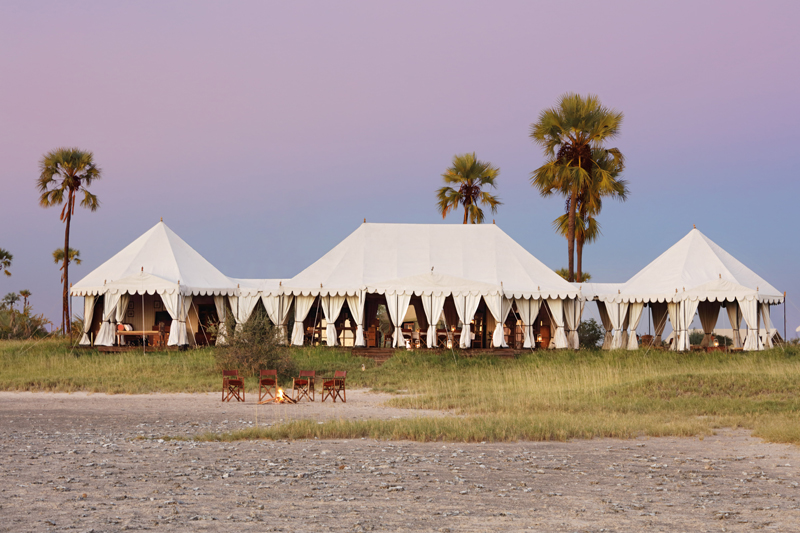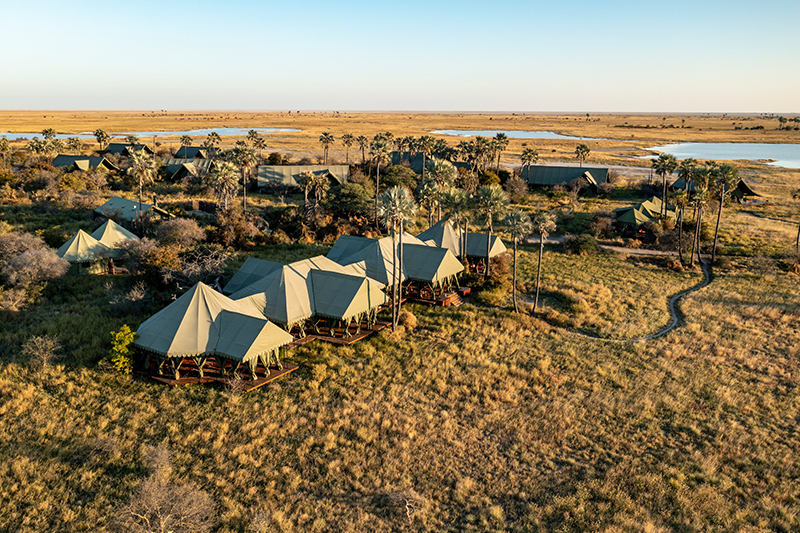Camp Kalahari
Camp Kalahari is nestled among the acacias and Mokolwane palms of Hyaena Island, close to Ntwetwe Pan and adjacent to the Makgadikgadi National Park.
Camp Kalahari is a great value for money option in the exclusive Makgadikgadi Pans region (unfortunately this doesn’t mean it is cheap to include within an itinerary, as access flights are expensive). The style of the camp is more down to earth than it’s better known sister camps (Jack’s and San) but the tented accommodation is still very comfortable, the food is good and the staff and guides are great. Camp Kalahari is perfect for travellers who are very keen to experience the Makgadikgadi Pans region, with its unique scenery, varied activities and specialist wildlife highlights, but who do not need to stay in a five star environment.
The Makgadikgadi Pans are well worth a visit for anyone who enjoys exploring different habitats and landscapes, and is prepared to compromise a little on the big game experience in favour of geographical diversity and more specialist wildlife viewing. The specialist wildlife is worth a particular mention as it is sometimes the key reason for visiting the area – brown hyaena, aardvark, aardwolf and habituated meerkats.
Rooms
The camp has twelve accommodation tents including two family rooms which comprise of two tents linked together by an inter-leading shared bathroom. Each tent is built onto a solid earth plinth and shaded by canvas with a private verandah and safari chairs to the front. The interiors are classic old safari style and the en suite open air bathrooms include flush toilets and plumbed showers.
Central Areas
The central areas are built under thatch and include a library, lounge and dining area. There is also a small swimming pool and pavilion which is a great place to unwind during the heat of the day.
Facilities
Wi-Fi – Yes
Power for charging – Yes
Swimming pool – Yes
Habitat & Wildlife
The Makgadikgadi Pans are not a mainstream safari destination. Together with the adjacent Nxai Pan, the Makgadikgadi Pans cover an area of nearly 5500 sq. miles. The pans, remnants of a huge inland sea, are largely void of vegetation except for a few areas of open grassland and isolated baobab islands. During the rains, from December to March, the pans fill up and attract large numbers of water birds including flamingos and pelicans. Great herds of wildebeest, gemsbok, springbok and zebra also gather, as do predators such as lion and cheetah who move in during this time of plenty. The occasional elephant is even seen passing through! However, once the dry season sets in, the water reliant species migrate to leave an empty wilderness with an eerie silence and only specialist species remain in the grassland and scrub bush that fringe the pans. Brown hyaena and meerkats are two of the key species of interest found within the Kalahari ecosystem, whilst others include ostrich, aardvark, aardwolf, spring hare, black-backed jackal, African wild cat and porcupine.
The recent introduction of pumped water holes on the local concession is supporting the resident wildlife and encouraging more game to remain in the area during the long dry season. In particular, elephants are being seen more regularly. However, it is a delicate balance and it will take a few years to discover what the carrying capacity of the area is during the dry season.
Activities
Activities vary according to the season you visit. During the dry season, May to October, it is possible to explore the pans by quad bike and this is a key experience which is often undertaken in the afternoon and ends with a sundowner drink overlooking the pans. During the wet season, November to April, the use of quad bikes is limited and quad biking on the pans is not possible. Year round you may enjoy guided walks (usually hosted by Bushman trackers who can show you how they survive in this harsh landscape), day and night game drives (most game is seen during the wet season, including predators, but night drives are productive all year round and good for specialist species such as brown hyaena and aardvark) and the exploration of undocumented archaeological sites. A further highlight available throughout the year is a dawn visit to a local habituated meerkat colony where you can sit quietly and watch the meerkats at close range. Beware, they may use you as a lookout point!
Horse-back safaris are also available as a local activity, or for more experienced riders it is possible to arrange multi-day riding safaris across the pans.
For anyone really keen to explore the salt pans in depth by quad bike, camping excursions to a rocky outcrop in the middle of the pans known as Kubu Island may be arranged (this should be booked in advance and is only available during the dry season). It is also possible to enjoy a more in-depth bushman experience with a group of around 24 bushman from one clan, spanning all ages except school age children, who are residing traditionally in the area. The idea is that the family continue their traditions and pass on their knowledge to younger generations whilst at the same time earning a living in their rapidly changing world. Guests staying 4 nights or more are able to enjoy a full day bushman experience whereas shorter bushman walks are available for all guests as a standard activity.
The most recent addition to the portfolio is a small helicopter which is available for hire to undertake scenic flights over the pans, the surrounding grasslands and to Kubu Island.
Seasons
Camp Kalahari is open all year round and there are pros and cons at any time of year. Quad biking is only possible during the dry season, but traditional wildlife viewing is better during the rainy season.
Families
Camp Kalahari is a great destination for families and does accept children of all ages, though we would suggest that seven years and older is arguably best. The region itself is hugely interesting and the varied activities mean that no two days are ever the same. Children are often equally inspired by the small things and activities such as visiting the meerkat colony or digging up tubers with the Bushman could become highlights of their holiday. The family tents are perfect for those who wish to stay together under one roof and the swimming pool is a welcome relief especially during the hot season from September to April (but the water is a bit cold during the cold winter months!) Families with children under 12 years of age need to book a private vehicle.
Camp Kalahari supports the Makgadikgadi Conservation Initiative which promotes the expansion of large mammal migration routes between northern Botswana (Chobe and the Okavango) and the Kalahari Desert (specifically the Makgadikgadi National Park) which have been cut short by the implementation of mass fencing. The aim is to stop the restriction of this movement by working alongside local communities to develop land use that benefits everyone and yet allows the migrating animals, mostly zebra and wildebeest but also elephants and other plains game, to move freely.
Another initiative they support is leopard population dynamics and conservation in the Khwai area of Botswana (eastern Okavango) through the Botswana Predator Conservation Trust. The Trust aims to establish territory locations, sizes and threats to leopards which reside inside the private reserve compared to those whose territories are closer to villages. This information enables them to learn about the survival strategies and intra-species interactions of leopards so they can therefore focus on the areas in need of human-predator conflict alleviation.
Coaching for Conservation’s programme Connecting Conservation Classrooms is all about educating Botswana’s children on the value of wildlife and respect of their environment and uses Natural Selection lodges (of which Camp Kalahari is one) as visitor classrooms.
Together with their sister camps, Jack’s Camp and San Camp, Camp Kalahari also work with and provide employment for local bushman families, helping them to maintain their traditions and pass on skills to their children.



